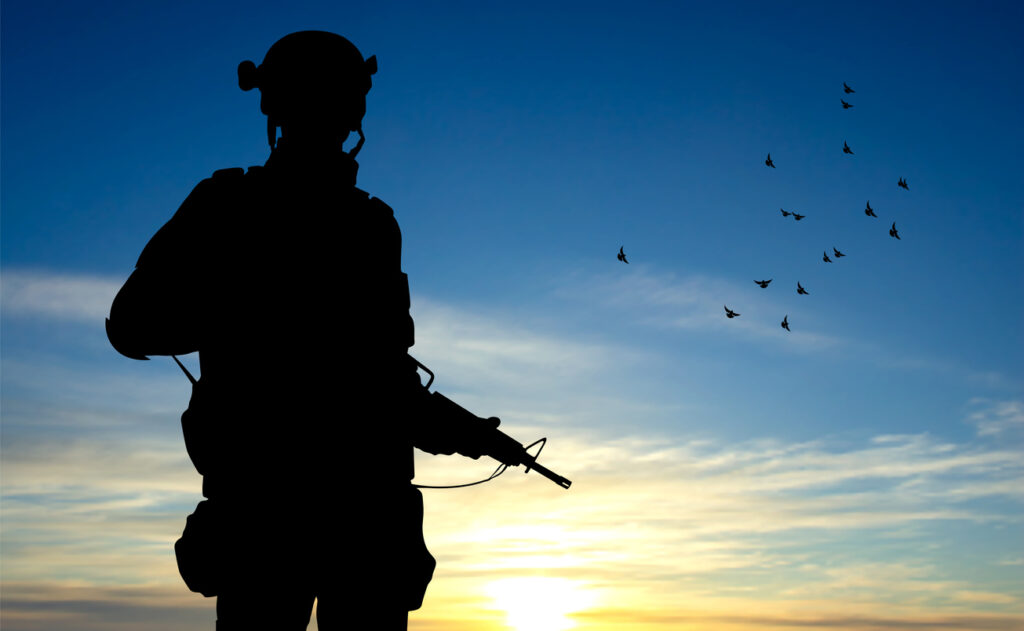The modern incarnation of fighters for hire in Africa, known as private military companies (PMCs), such as Russia’s Wagner Group, now the Africa Corps — trade security guarantees and counterterrorism pledges for money and natural resource concessions, especially in the Sahel.
Now “a more decentralized and entrepreneurial phenomenon has emerged: the rise of jihadist private military contractors,” according to an article by Aries D. Russell for Aries Intelligence. “These are seasoned foreign fighters who offer tactical training, battlefield support, and operational consulting to extremist groups, sometimes for money, often for ideology.”
Russell says that trained fighters and consultants are showing up in conflicts far from home, which explains why “Middle Eastern insurgent tactics are increasingly seen in Africa and elsewhere.” An example, he wrote, is the partnership between Yemen’s Houthi movement and Somalia’s al-Qaida-affiliated al-Shabaab.
The Houthi group, supported by Iran’s Revolutionary Guard Corps and Hezbollah, is expanding its influence beyond the Middle East and into Africa, where it sells weapons to al-Shabaab and the Islamic State group in Somalia (IS Somalia).
The Houthis have received advanced training in Iran, Lebanon and Iraq, gathering skills such as missile assembly and drone coordination, which are passed onto the groups they support, Russell noted.
The Houthis and Iran gain “strategic depth” through closer ties with these groups, according to the Carnegie Endowment for International Peace. These relationships have further destabilized Somalia, and analysts warn that Houthi influence also might threaten Djibouti, Ethiopia and Kenya.
Somali President Hassan Sheikh Mohamud has blamed the Houthis for the proliferation of weapons that has fueled the terrorists’ resurgence. Many of these weapons were traced back to Iranian-origin stockpiles, “underscoring Tehran’s indirect but critical role in expanding militant capabilities beyond the Middle East,” Russell wrote.
Al-Shabaab and Somali pirates also have ramped up attacks on commercial ships in the Gulf of Aden. This drew away international naval forces and created smuggling windows for Houthi weapons. Al-Shabaab fighters also have traveled to Houthi-controlled ports in Yemen for training on drone deployment, missile coordination and “asymmetric warfare techniques previously unseen in East Africa,” Russell wrote.
In January, IS Somalia launched two successful drone strikes on security forces in Puntland, a semiautonomous region of Somalia. This was the first reported use of drones by the terror group, according to the Armed Conflict Location and Event Data project, or ACLED. Al-Shabaab and IS Somalia receive drones from the Houthis.
“Once this [drone] technology is adopted [by] a particular terrorist group, the ideas will proliferate in the region and be picked up by other armed groups, even if there are no direct links between those groups,” Taimur Khan, Conflict Armament Research’s head of Gulf operations, told the Institute for Security Studies.
The Houthis are not the only Middle Eastern group expanding their operations on the continent. Iranian- and Syrian-trained jihadist private military contractors (PMCs) also are supporting nonstate actors in Africa, including in Libya and Sudan, experts say.
According to Russell, the rise of jihadist PMCs in the Middle East can be traced to the emergence of Malhama Tactical, a Syria-based outfit founded by Uzbek veterans linked to al-Qaida affiliates. The group was officially formed in 2016. Working as a freelance jihadist special operations unit, Malhama offered a blueprint for other groups to replicate by teaching battlefield lessons to insurgents.
The group posted photos on social media showing its instructors training Syria-based Chinese Uighur fighters and men from the Maldives. Malhama also encouraged supporters to donate via cryptocurrencies to help it expand. Groups such as Albanian Tactical, Muhojir Tactical and Yurtugh Tactical have professionalized Malhama’s approach.
“These groups offer advanced capabilities, from sniper instruction and CQB [close quarters battle] to night operations, trauma medicine and drone warfare tactics,” Russell wrote.
These groups often train alongside one another and post instructional videos on social media that double as propaganda and recruitment tools. Serving as embedded trainers or operational advisors, they operate informally or under the umbrella of groups such as Malhama. Mounting evidence suggests that foreign fighters trained in Iraq and Syria are rotating between jihadist conflicts in the Horn of Africa and the Sahel.
“Analysts warn that this phenomenon is likely to expand, as these groups frame themselves as battlefield professionals and contract-ready entities,” Russell wrote.
The rise of jihadist PMCs has made militant networks more agile, complicating traditional counterterrorism strategies.
“Countering it will require more than surveillance or airstrikes,” Russell wrote. “It will demand a shift in mindset — one that accounts for digital logistics, ideological subcontracting, and the marketization of militant talent.”

